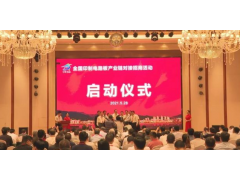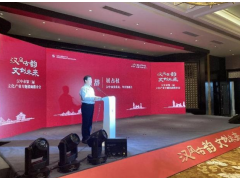At present, in order to attract customers, some businesses use excessive and oversized packaging to create the feeling of "large quantity". After opening the package, consumers find that the packaging and weight are not equal, and they pay for useless space.
Recently, a survey of 1,333 parents surveyed by the China Youth Daily Social Survey Center United Questionnaire Network (wenjuan.com) showed that 80.9% of the respondents felt that over-packaging of snacks was common, and 86.6% of the respondents felt that over-packaging of snacks was common. Look forward to strengthened supervision on the issue of excessive packaging. To put an end to excessive packaging, 65.3% of the respondents suggested requiring manufacturers to clearly indicate the actual volume or weight of snacks on the packaging, and 62.9% of the respondents suggested carrying out special rectification and punishing products that do not meet standards.
80.9% of respondents believe that over-packaging of snacks is common
Wang Qiu, a freelancer in Hangzhou, bought a box of mooncakes during the Mid-Autumn Festival. "There are nine mooncakes in a large box. There are also small boxes in the big box. There is also a plastic shell in the single box. There are three boxes of mooncakes." Come and pack it. It looks very exquisite, but there are only a few of them, each one is not big, and the taste is very average."
Chen Xin, a nurse at a public hospital in Wuhan, feels that when buying things, she always encounters excessive packaging. For example, there are only 10 apples in a box, which by itself does not take up much space, but with the partitions and cushions inside the box, the whole box appears to be very large.
In the survey, 80.9% of the respondents felt that over-packaging of snacks was common, and 30.8% of them thought it was very common.
Wang Qiu feels that there is an increasing trend of over-packaging of products. In her opinion, it is understandable that if the products are not afraid of squeezing, they should be packaged separately, but it is unnecessary for some products that are not afraid of squeezing to be packaged and sold in this way. "I bought a box of milk before. I thought there were 24 bottles when I looked at the packaging. I calculated the price of a single bottle and it felt like a good deal. But when I got home, I found that there were only 12 bottles and half of the box was empty. So on average, each bottle The price is very expensive. Although 12 bottles are marked inconspicuously on the outer packaging, sometimes you don’t look that carefully when buying something.”
Which products are more commonly overpackaged? In the survey, the top ones were puffed food (59.2%), Internet celebrity snacks (53.7%), children's snacks (46.0%), milk nuts (34.9%), and others: chocolate candies (32.3%) , biscuits and beverages (31.4%), tea and alcohol (24.2%), cosmetics (19.6%), fresh edible agricultural products such as fruits and vegetables (15.8%), daily necessities (12.5%), etc.
Chen Xin feels that puffed snacks are filled with more air and look like a big package. Products such as milk, nuts, and candies are also often over-packaged. "The cosmetics I buy usually come in a small bottle, but they often come in a large packaging box. Some boxes are very exquisite and even have small mechanisms and ingenuities. But in fact, they are not used at all. It is better to give them more. A few samples”.
Li Weimin, deputy secretary-general of the China Consumer Rights Protection Law Research Association, said that the expansion of snack stalls is actually a way for manufacturers to make profits. The so-called snack sharing area means that the space of snacks is occupied by useless packaging. At present, in the market, the "sharing area" of some snacks is getting larger and larger.
Li Weimin analyzed that another reason for this phenomenon may be that it will highlight the complexity and diversity of the snacks’ internal and external packaging design and attract consumers from the packaging. However, he pointed out that doing so ignores consumers. interests, harming the legitimate rights and interests of consumers such as their right to know, their right to choose, and their right to fair trade, and some even constitute fraud.
What are the adverse effects of excessive packaging? In the survey, 61.1% of the respondents believed that this was a waste of money and suspected of false advertising, 60.8% of the respondents believed that it would increase waste and pollute the environment, and 58.4% of the respondents believed that the packaging was used to mislead consumers and infringe the rights of consumers. Regarding consumer rights, 49.3% of the respondents pointed out that it would lead to a waste of resources, and 24.0% of the respondents believed that it would damage the brand image in the long run.
"A very small item is first wrapped in plastic and then wrapped in a cardboard box. The material that could have been used to wrap two or three products is only used to wrap one product. It is very wasteful and increases environmental pollution." Wang Qiu believes , some snacks have useless "sharing areas" and are suspected of deceiving consumers, because many people do not carefully look at the weight or quantity of the product when buying, and they may be easily fooled if they look at the packaging. And after excessive packaging, the price will often increase.
Huang Xin, a mother born in the 1980s in Beijing, believes that excessive packaging is a "face project" for businesses, which will not only pollute the environment but also mislead consumers. Consumers will be even more disappointed when they open the beautiful packaging but find that the product is not as good as expected. "This will ultimately damage the credibility of the business and is not conducive to the sustainable development of the enterprise."
86.6% of the respondents expect to strengthen supervision on excessive packaging issues
In September 2023, the mandatory national standard "Restricting Excessive Packaging of Goods Food and Cosmetics Requirements" will be officially implemented. The standard stipulates the void ratio, number of packaging layers, and packaging cost of food and cosmetics packaging. In the survey, 86.6% of the respondents expected to strengthen supervision on excessive packaging.
Wang Qiu believes that packaging only needs to ensure that the food does not get wet, does not deteriorate, and is a little more beautiful to make the food look appetizing. There is no need for three layers inside and three outside, and there should be fewer flashy things.
To put an end to excessive packaging, 65.3% of the respondents suggested requiring manufacturers to clearly mark the actual snack volume or weight on the packaging, 62.9% of the respondents suggested carrying out special rectification and punishing products that do not meet standards, and 47.6% of the respondents suggested Respondents suggested that false propaganda and fraud should be severely punished, and 46.8% of the respondents suggested increasing supervision and sending a signal of strict control.
Wang Qiu believes that the supervision and reporting mechanism should be improved to eliminate this phenomenon from the source. At the same time, it is important to guide merchants not only to attract consumers through outer packaging, but to truly make products that everyone likes.
In addition, 32.8% of the respondents suggested selecting relevant benchmark companies to create a demonstration effect, 32.6% of the respondents suggested calling on companies to be consumer-oriented and streamline their designs, and 19.6% of the respondents suggested opening up channels for consumer reporting and supervision.
Chen Xin feels that it is necessary to strengthen supervision and law enforcement and deal with it strictly to force merchants to make changes. At the same time, consumers should also be reminded to read more information on the packaging when shopping to avoid being deceived.
Li Weimin reminded consumers that first of all, they should carefully check and identify the quality and standards of goods when shopping. According to the provisions of the new national standard, the number of packaging layers must not exceed three, and the packaging cost must not exceed 20% of the product sales price. Different categories of food have set a maximum packaging void rate of 10% to 25%. Secondly, if you find that the purchased items do not meet the above regulations or the outer packaging does not meet the prescribed requirements, you must retain the evidence and report it to the relevant departments. In serious cases, you can also file a complaint or prosecute according to law. Third, it is necessary to build an integrity system, and relevant departments must also strengthen supervision and inspection, increase the proportion of penalties, purify the market environment in accordance with the law, and safeguard the legitimate rights and interests of consumers.
"Consumers are now more rational and pay more attention to the cost-effectiveness of the product itself." Huang Xin believes that manufacturers should change their thinking, reduce waste, and focus on improving product quality. "Respect consumers and cannot make products 'look' cost-effective. only when they are truly cost-effective can we ultimately win the love and trust of consumers."
Among the respondents, 16.2% were born after 00, 46.7% were born after 90, 29.4% were born after 80, 6.4% were born after 70, and 1.3% were born after 60.






